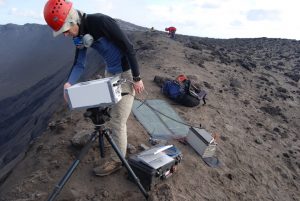 Simon Carn (GMES/EPSSI), is the principal investigator on a project that has received a $71,762 research and development grant from the University of Maryland.
Simon Carn (GMES/EPSSI), is the principal investigator on a project that has received a $71,762 research and development grant from the University of Maryland.
The project is titled “Advancing NASA OMI SO2 Product: Enabling New Science Analyses, Applications, and Long-Term, Multi-Satellite Monitoring.”
This is the first year of a three-year project potentially totaling $219,881.









